Even experienced advertisers, media buyers, and affiliate marketers can make mistakes that may initially seem insignificant. Through analyzing customer requests for technical support, the team from YeezyPay, an agency that offers access to Google's trusted agency advertising accounts, has identified the top six popular mistakes when launching advertising campaigns in Google Ads.

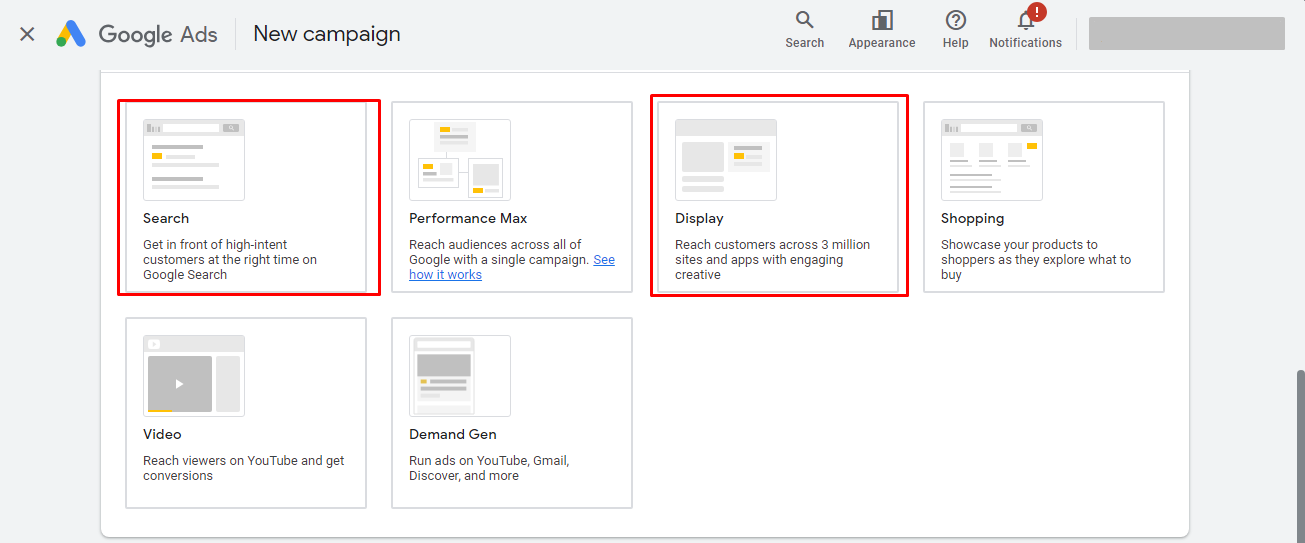
When ads from both networks are combined in one campaign, the CTR is averaged. This means that if the search network campaign has a CTR of 5% and the display network campaign has a CTR of 0.49%, the average CTR for the combined campaign would be 2.74%. As a result, ads in search results may be shown less frequently compared to competitors' ads since the quality indicator, which depends on CTR, will be underestimated.
Solution
To address this issue, it is crucial to separate advertising campaigns for search results and the display network. By keeping them separate, you can optimize and fine-tune each campaign to their respective network's characteristics. This approach allows you to focus on improving the CTR and ad quality indicators for each network individually, resulting in more clicks and a more profitable cost-per-click (CPC).
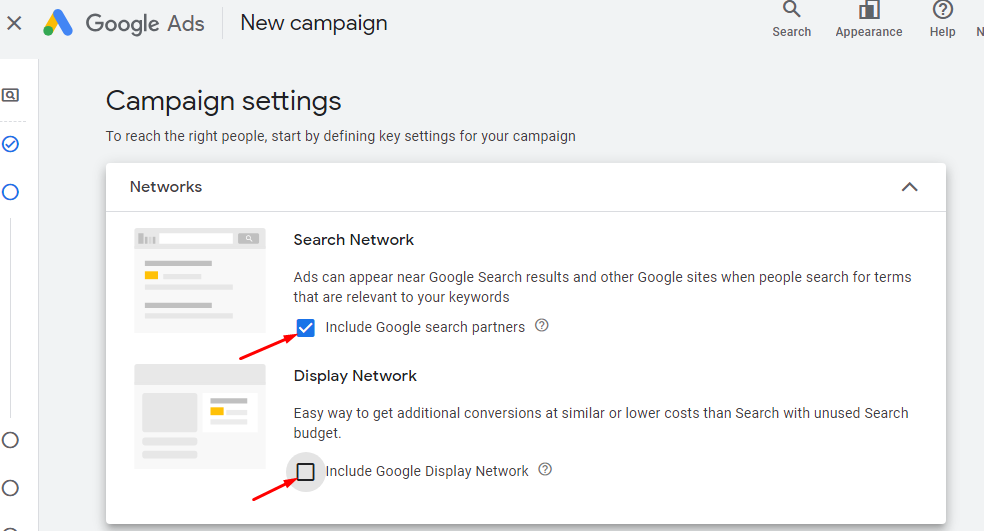
Account bans can get pretty expensive fast because they impact the earnings of media buyers.
Solution
It is crucial to prioritize the use of high-quality tools and resources when working with the Google Ads platform. This includes using reliable advertising accounts, resident proxies, secure means of payment, and anti-detect browsers.
To ensure the longevity and success of advertising accounts, it is advisable to pre-warm them by launching advertising campaigns for white offers. This helps establish a positive track record and build credibility with the platform. For media buyers operating in grayhat niches, using trusted agency accounts, such as those provided by services like YeezyPay, can be highly beneficial. These agency accounts have an increased level of trust, simplifying the media buyer's work and improving the ad approval rates.
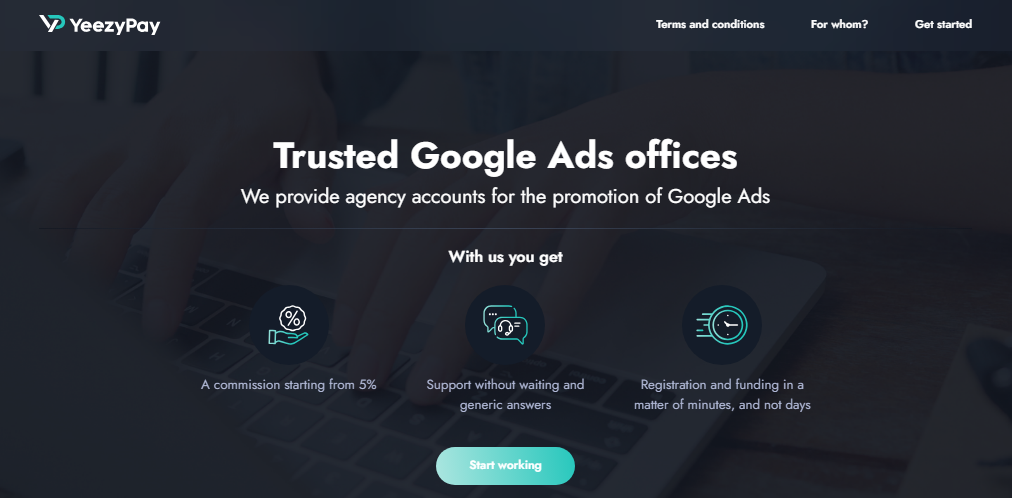
Solution
One simple solution to address this issue is to utilize the responsive search ad format. This format allows you to create multiple options for titles and descriptions, and the system will automatically select the combinations that yield the best click-through rates (CTR) and conversion rates. It is important to fill out all available fields to provide ample ad options for testing.
To further enhance the effectiveness of ads, it is recommended to leverage a wide range of advantages and unique selling propositions in the headlines and descriptions. This differentiation from competitors can increase the number of effective ads in your campaign. Additionally, using multiple responsive ads within a group and comparing their CTR can provide even more options for titles and descriptions, enabling you to identify the most successful combinations.
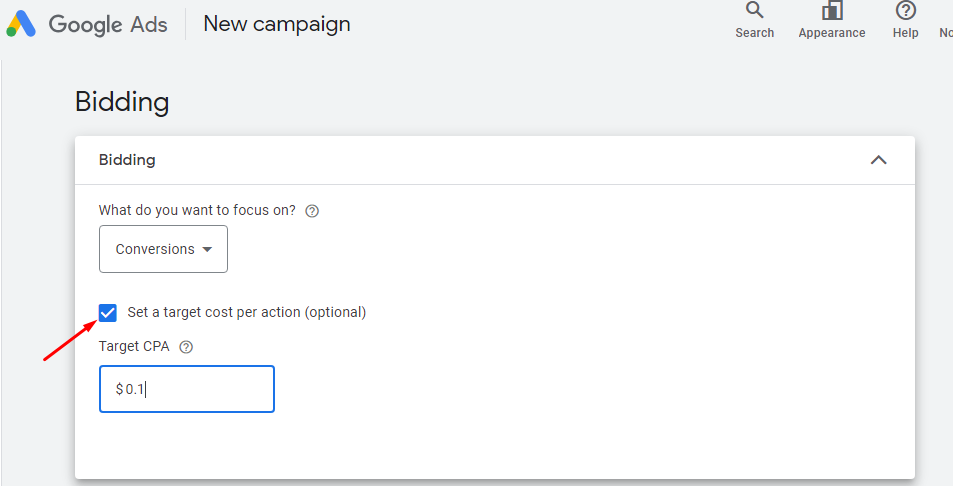
Solution
To mitigate this risk, it is advisable to begin with a manual bidding strategy. This allows the media buyer to have more control over bids for each keyword or targeting setting and allocate the budget towards the most converting options. By using a manual approach initially, the system can gather valuable information about conversions while the media buyer maintains control over the bidding process.
Moreover, it is crucial to provide the system with relevant data on conversions and user activity, which can be collected through Google Analytics. This data can further enhance the effectiveness of automated bidding strategies when implemented at a later stage, as it provides valuable insights into user behavior and conversion patterns.
Solution
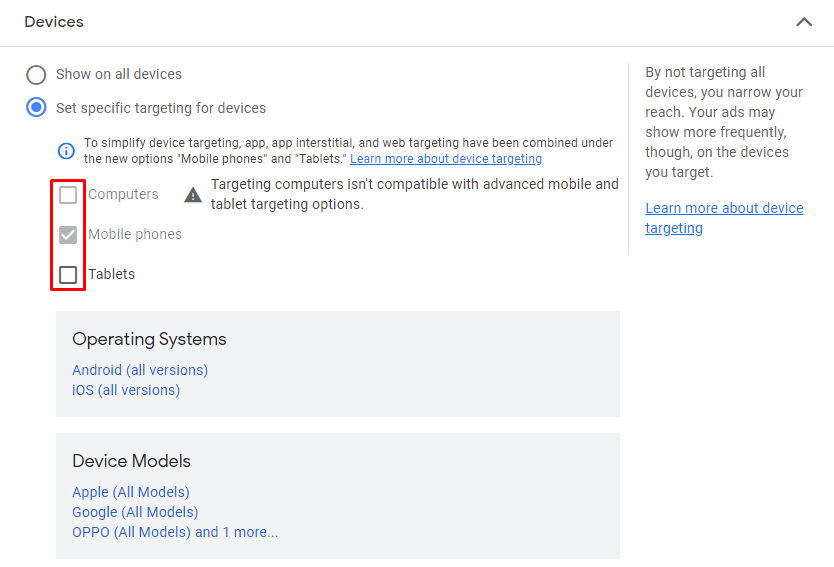
To address this issue, it is recommended to separate ad campaigns based on device types during the setup phase. This allows for better control over budget allocation and enables setting bids based on the cost per click for each device category. By implementing this approach, advertisers can optimize their advertising strategies and maximize conversions based on the specific characteristics and performance of different devices.
Solution
To address this issue, you can utilize the "Where your ads are showing" report. This report allows you to identify and pause the banners on sites and applications that are not bringing profitable traffic to your campaign. By taking this proactive step, you can avoid wasting your budget on ineffective advertising placements.
This is evidenced by the common mistakes mentioned in this article. It emphasizes the crucial importance of carefully looking into each advertising campaign and individual ad. This means paying close attention to setting up precise targeting to ensure accuracy. It also involves actively optimizing advertising campaigns right from the start. Ongoing testing is essential for refining strategies and getting the most out of your efforts.
Additionally, using premium tools and resources, like trusted agency ad accounts from YeezyPay, provides an extra safeguard. This not only increases campaign performance overall but also increases the longevity of your ad campaigns ensuring that you keep making profits in the long run.
What are the most common mistakes made when working with Google Ads?
Below we will analyze the list of the most popular mistakes when working with contextual advertising in Google Ads, and also tell you how to avoid them. It is assumed that the reader already knows how to launch advertising campaigns on Google's search engine and other Google ad platforms.Placing search and display network ads in a single advertising campaign
Placing ads for search results and the display network in one advertising campaign can have negative implications for ad quality and performance. It is recommended to separate these two types of campaigns to optimize results effectively. The Google Display Network generates a higher number of impressions but tends to have lower click-through rates (CTR) compared to search campaigns.When ads from both networks are combined in one campaign, the CTR is averaged. This means that if the search network campaign has a CTR of 5% and the display network campaign has a CTR of 0.49%, the average CTR for the combined campaign would be 2.74%. As a result, ads in search results may be shown less frequently compared to competitors' ads since the quality indicator, which depends on CTR, will be underestimated.
Solution
To address this issue, it is crucial to separate advertising campaigns for search results and the display network. By keeping them separate, you can optimize and fine-tune each campaign to their respective network's characteristics. This approach allows you to focus on improving the CTR and ad quality indicators for each network individually, resulting in more clicks and a more profitable cost-per-click (CPC).
Using low-quality tools and resources
Using low-quality tools and resources when launching advertising campaigns can have negative consequences, especially when it comes to Google Ads. Some media buyers overlook the fact that Google has stricter rules and algorithms that are designed to detect any attempts to bypass these rules. This can result in advertising accounts and domains being banned.Account bans can get pretty expensive fast because they impact the earnings of media buyers.
Solution
It is crucial to prioritize the use of high-quality tools and resources when working with the Google Ads platform. This includes using reliable advertising accounts, resident proxies, secure means of payment, and anti-detect browsers.
To ensure the longevity and success of advertising accounts, it is advisable to pre-warm them by launching advertising campaigns for white offers. This helps establish a positive track record and build credibility with the platform. For media buyers operating in grayhat niches, using trusted agency accounts, such as those provided by services like YeezyPay, can be highly beneficial. These agency accounts have an increased level of trust, simplifying the media buyer's work and improving the ad approval rates.
Not conducting ad tests
Failing to conduct ad tests can limit the potential for optimizing conversion rates. By creating only one ad variant for a group of keywords, affiliate marketers and media buyers miss out on valuable insights that can improve ad performance.Solution
One simple solution to address this issue is to utilize the responsive search ad format. This format allows you to create multiple options for titles and descriptions, and the system will automatically select the combinations that yield the best click-through rates (CTR) and conversion rates. It is important to fill out all available fields to provide ample ad options for testing.
To further enhance the effectiveness of ads, it is recommended to leverage a wide range of advantages and unique selling propositions in the headlines and descriptions. This differentiation from competitors can increase the number of effective ads in your campaign. Additionally, using multiple responsive ads within a group and comparing their CTR can provide even more options for titles and descriptions, enabling you to identify the most successful combinations.
Using automatic bidding in the first stages of advertising campaigns
Using automatic bidding in the initial stages of advertising campaigns can be risky. While Google Ads offers various automated advertising strategies and bidding options, the system's algorithms tend to perform well only when there is sufficient data available for each campaign goal (typically 50+ conversions). Therefore, it is generally not recommended to rely on automatic strategies right from the start of a campaign.Solution
To mitigate this risk, it is advisable to begin with a manual bidding strategy. This allows the media buyer to have more control over bids for each keyword or targeting setting and allocate the budget towards the most converting options. By using a manual approach initially, the system can gather valuable information about conversions while the media buyer maintains control over the bidding process.
Moreover, it is crucial to provide the system with relevant data on conversions and user activity, which can be collected through Google Analytics. This data can further enhance the effectiveness of automated bidding strategies when implemented at a later stage, as it provides valuable insights into user behavior and conversion patterns.
Not separating campaigns by device
By not separating campaigns by device, advertisers miss out on the opportunity to effectively allocate their budget and set bids based on individual device performance (such as desktop and mobile devices). Additionally, they are unable to disable ad serving on devices that have low conversion rates. This division of campaigns becomes particularly crucial when working on optimizing the mobile or desktop version of a landing page or website during an active advertising campaign.Solution
To address this issue, it is recommended to separate ad campaigns based on device types during the setup phase. This allows for better control over budget allocation and enables setting bids based on the cost per click for each device category. By implementing this approach, advertisers can optimize their advertising strategies and maximize conversions based on the specific characteristics and performance of different devices.
Not excluding non-profitable sites in Google Display Network
After launching an advertising campaign, it's important to keep track of both profitable and non-profitable sites. One common mistake made by affiliates is forgetting to pause ads on non-profitable sites and within the Google Display Network.Solution
To address this issue, you can utilize the "Where your ads are showing" report. This report allows you to identify and pause the banners on sites and applications that are not bringing profitable traffic to your campaign. By taking this proactive step, you can avoid wasting your budget on ineffective advertising placements.
Conclusion
Even the most experienced affiliates, media buyers, and advertisers can run into problems when working with Google Ads, regardless of their experience.This is evidenced by the common mistakes mentioned in this article. It emphasizes the crucial importance of carefully looking into each advertising campaign and individual ad. This means paying close attention to setting up precise targeting to ensure accuracy. It also involves actively optimizing advertising campaigns right from the start. Ongoing testing is essential for refining strategies and getting the most out of your efforts.
Additionally, using premium tools and resources, like trusted agency ad accounts from YeezyPay, provides an extra safeguard. This not only increases campaign performance overall but also increases the longevity of your ad campaigns ensuring that you keep making profits in the long run.





